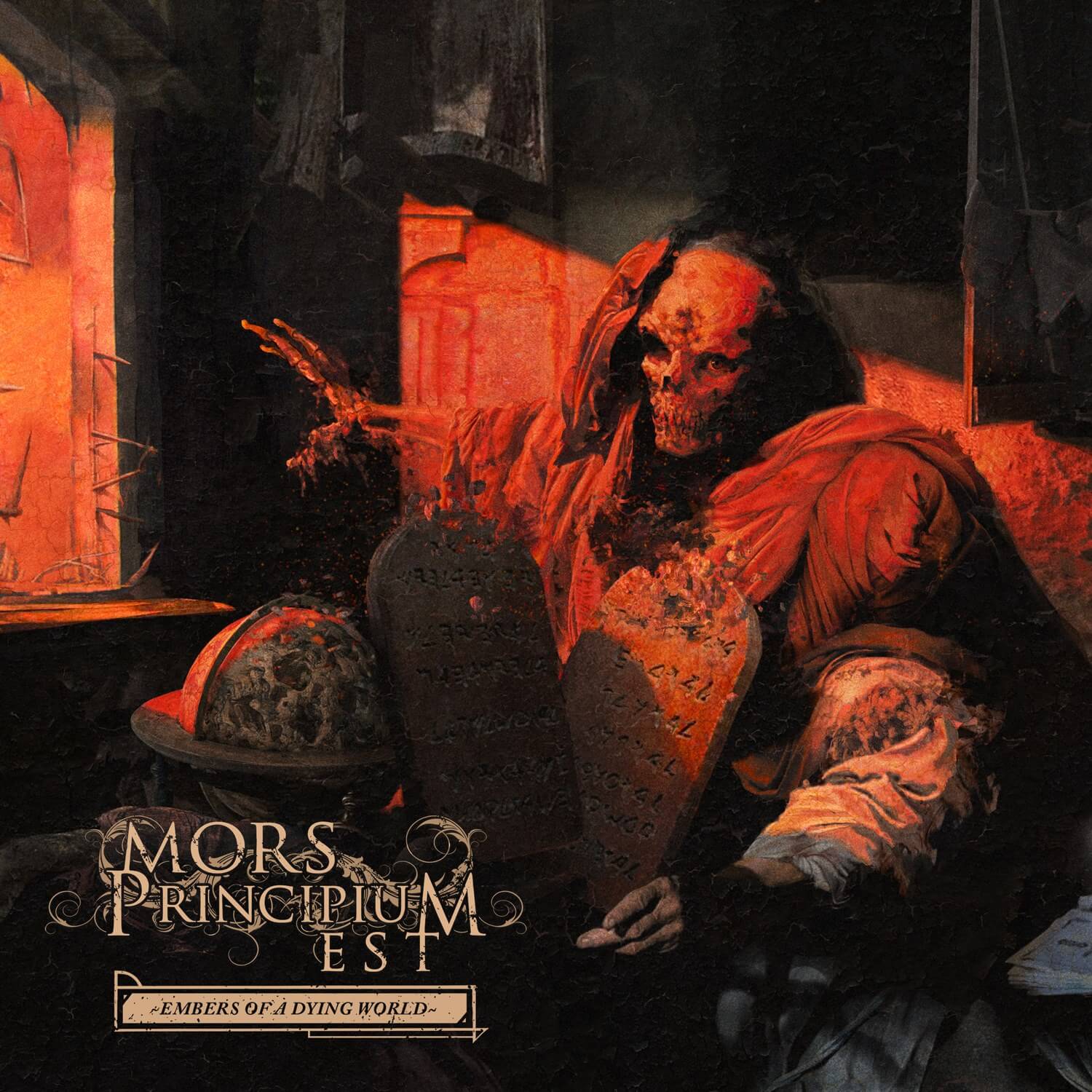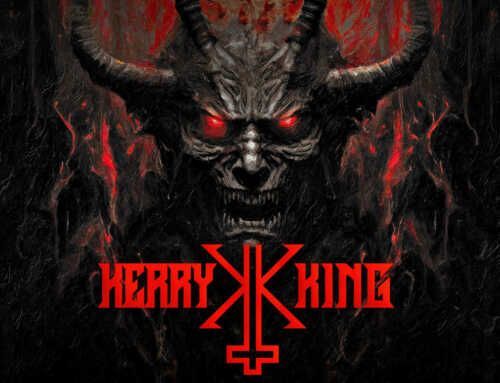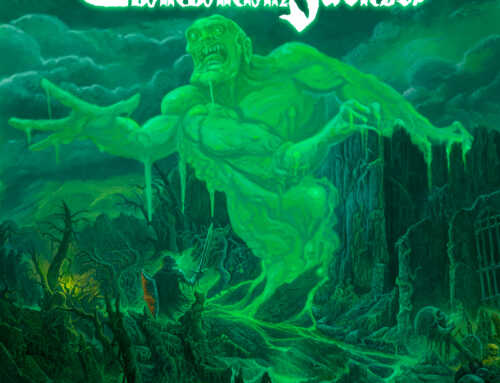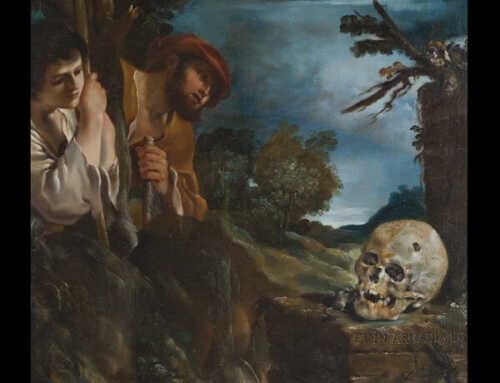Welcome, once again, to the spectacular world of Mors Principium Est, wherein our heroes return with another installment of kitchen sink metal.
Literally, the band chucks everything at your senses over the course of the fifty-minute duration of Embers of a Dying World, their no holds barred melodic death metal assault giving the listener an absolute battering for sure, yet always able to soothe the savage brow courtesy of their savvy use of dynamic and ear-pleasing melodic panache.
‘Proper’ opener Reclaim the Sun is an absolute storming opening statement of intent, coming after the grandiose scene setting of Genesis and setting the bar high for the rest of the record. Everyone is firing on all cylinders, each band member delivering at maximum capacity over the course of four minutes and forty seconds of exhilarating melodeath. Masquerade keeps things on the boil, counterpointing a classic metal intro from guitarist Andy Gillion with futuristic bleeps and belches before the next in the seemingly unstoppable line of hair-raising riff barrages makes its presence felt. It’s a nigh-on perfect exposition of its kind, is Masquerade; Ville Viljanen’s raw throated roar leads the charge, supported ably from the rear by the battering percussive unit of Mikko Sipola and his partner in rhythm Teemu Heinola, but it’s the quite superb guitar contributions from Gillion that set the pace early on. Soloing or riffing, the bloke’s performance is top-notch, and that doesn’t let up on the superb sub-symphonic death of Into the Dark. Gillion is joined on this track by Aussie Paul Warlingham, and the pair complement each others’ playing nicely, their harmonies bringing a bit of trad metal classicism to proceedings.
The Drowning drops the pace a little – just a little, giving the listener time to take a breath and enjoy Viljanen’s slightly more considered vocal approach on this one. The change in pace is welcome, the impact of the track heightened, but that change in pace is nothing compared to what follows.
Death is the Beginning (which the classically-educated amongst you will immediately realise is the English translation of the band’s name) is a slow burning, almost stately epic of the kind that’s all too rare in the world of death metal. Ushered in on sombre chords and the filigree vocals of guest chanteuse Christina Marie, the song builds patiently to a full-blooded roar before ebbing again into the sort of baroque/romantic soundscapes so beloved once upon a time by Celtic Frost. But it’s only a fleeting reverie, the band builds the power back up, allowing Gillion to unleash perhaps his best solo of the album, and then we’re back into the full throttle sturm und drang again.
The Ghost isn’t quite as good as what’s gone before, struggling to assert any sort of foothold in the consciousness and seeming a little overlong. In Torment gets things moving again, it’s denser, more solid sound again highlighting the band’s ability to change things up when they need to; This eclecticism continues with the orchestral interlude Agnus Dei and then we’re into the final two tracks, both of which set the pulse racing and the blood pumping again.
Agnus Dei is a choral piece that brings to mind Benjamin Britten for some reason, ethereal voices finally giving way to Gillion’s guitar, which counterpoints the chorale in superb style. This all too brief moment of pastoral semi-tranquility is shattered by the superb into to penultimate track The Colours of the Cosmos, Viljanen in all his guttural glory spitting out the lyrics as the band return to the steamhammer symphonic overload of the early part of the album. It’s heads-down in the final track, too, with the quite superb Apprentice of Death winding things up in the same earth-shattering fashion as they opened.
A fine return then, from a band who on the evidence of this release really are up there with the titans of the melodic death metal genre. Great stuff.
Embers of a Dying World is out now.








Leave A Comment